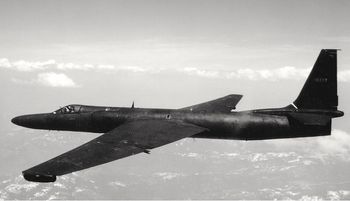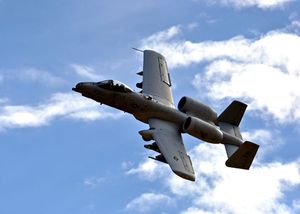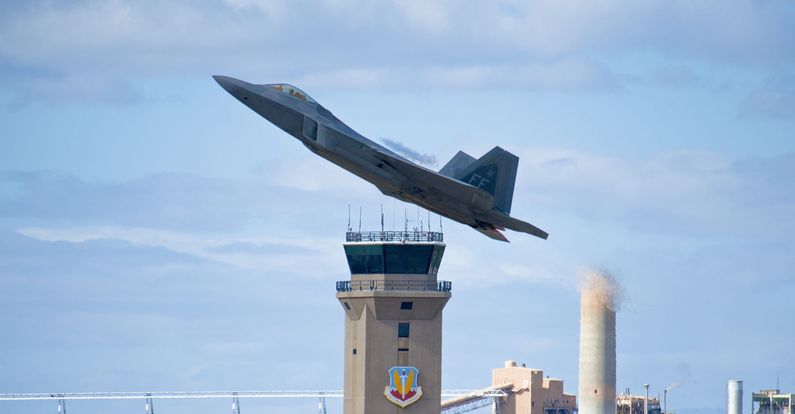Davis-Monthan Air Force Base
|
Davis-Monthan Air Force Base (1940-Active) - A United States Air Force base first established in 1940 as Tucson Army Air Field at Tucson, Pima County, Arizona. Renamed Davis-Monthan Army Air Field on 3 Dec 1941 and after the creation of the United States Air Force in 1947 renamed Davis-Monthan Air Force Base on 11 Jan 1948. Named for World War I pilots Lieutenant Samuel H. Davis and Oscar Monthan. Davis died in a Florida aircraft accident in 1921. Monthan was killed in the crash of a Martin bomber in Hawaii in 1924. Active military installation.
Current Mission StatementDeploy, employ, support, and sustain attack airpower in support of Combatant Commanders anywhere in the world at a moment's notice. Train the finest attack pilots for the Combat Air Forces. Provide every member of Team Davis-Monthan with responsive, tailored, mission-focused base support. World War II The first assigned U.S. Army Air Corps units were the 1st Bomb Wing, 41st Bomb Group, and 31st Air Base Group, activating on 30 April 1941 with Lt. Colonel Ames S. Albro Sr. as commanding officer. The base became known as Davis-Monthan Army Air Field on 3 December 1941. During the war, heavy bombardment units were trained on B-24 Liberator and B-29 Superfortress bombers. The training ended on 14 Aug 1945, with the Japanese surrender.
Post World War II Immediately after the war Davis-Monthan housed German POWs from June 1945 to March 1946 and became a separation center for returning troops. The base population reached a peak of 11,614 people in September 1945. Davis-Monthan was selected as a storage site for decommissioned aircraft. Excess B-29s and C-47 "Gooney Birds" were sent to the base because the low humidity and alkali soil made it ideal for aircraft storage and preservation. The stored aircraft were kept in mothballed condition to be used for parts or possible reactivation. This operation continues today as each succeeding generation of aircraft reaches the end of its operational life.
The Cold War The beginning of the cold war era saw the creation of the U.S. Air Force in 1947 and the formation of two B-29 bomb groups at the base. This was followed by the development of aerial refueling for bombers with the KB-29 tankers. The base transitioned to Strategic Air Command (SAC) B-47 bombers and Air Defense Command (ADC) F-86 fighters in 1953. In April 1954 the 684th Aircraft Control and Warning (AC&W) Squadron moved to Davis-Monthan from Kirtland Air Force Base with their mobile radar equipment in preparation for integration into the permanent radar system. In the spring of 1956, the 684th moved from Davis-Monthan to the newly constructed Mount Lemmon Air Force Station atop the nearby 9,000-foot Mount Lemmon. Davis-Monthan continued to support the Mount Lemmon Air Force Station logistically and by providing quarters for its married personnel and daily transportation to and from the site until the site closed in 1969. In 1962 SAC activated a Strategic Missile Wing and 18 Titan II ICBM sites around Tucson. In 1963 U-2 strategic reconnaissance aircraft, began flying global long-range strategic reconnaissance and intelligence missions from Davis-Monthan. Davis-Monthan was transferred to Tactical Air Command (TAC) on 1 Oct 1976 after 30 years under SAC and began A-10 Thunderbolt II training. In 1982 Davis-Monthan began the deactivation and destruction of its 18 Titan II missile launch sites and by 1984 the last one was taken offline. One site was not destroyed and today it remains as the Titan Missile Museum south of Tucson.
Current StatusActive military installation under the U.S. Air Force Air Combat Command (ACC). Access may be restricted. The nearby Pima Air Museum offers a great variety of vintage aircraft and tours through the Davis-Montham boneyard. The boneyard tours are not given on weekends or Federal holidays. Inside the entrance to Davis-Monthan is a static display of vintage aircraft tied to the base. This display includes a U-2 reconnaissance aircraft and an early version of the current A-10 aircraft.
See Also: Sources:
Links: Fortification ID:
| |||||||


